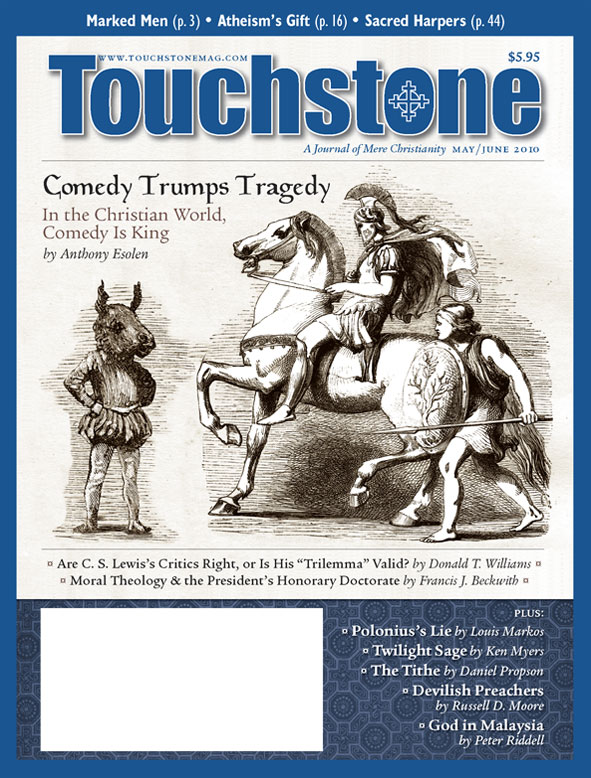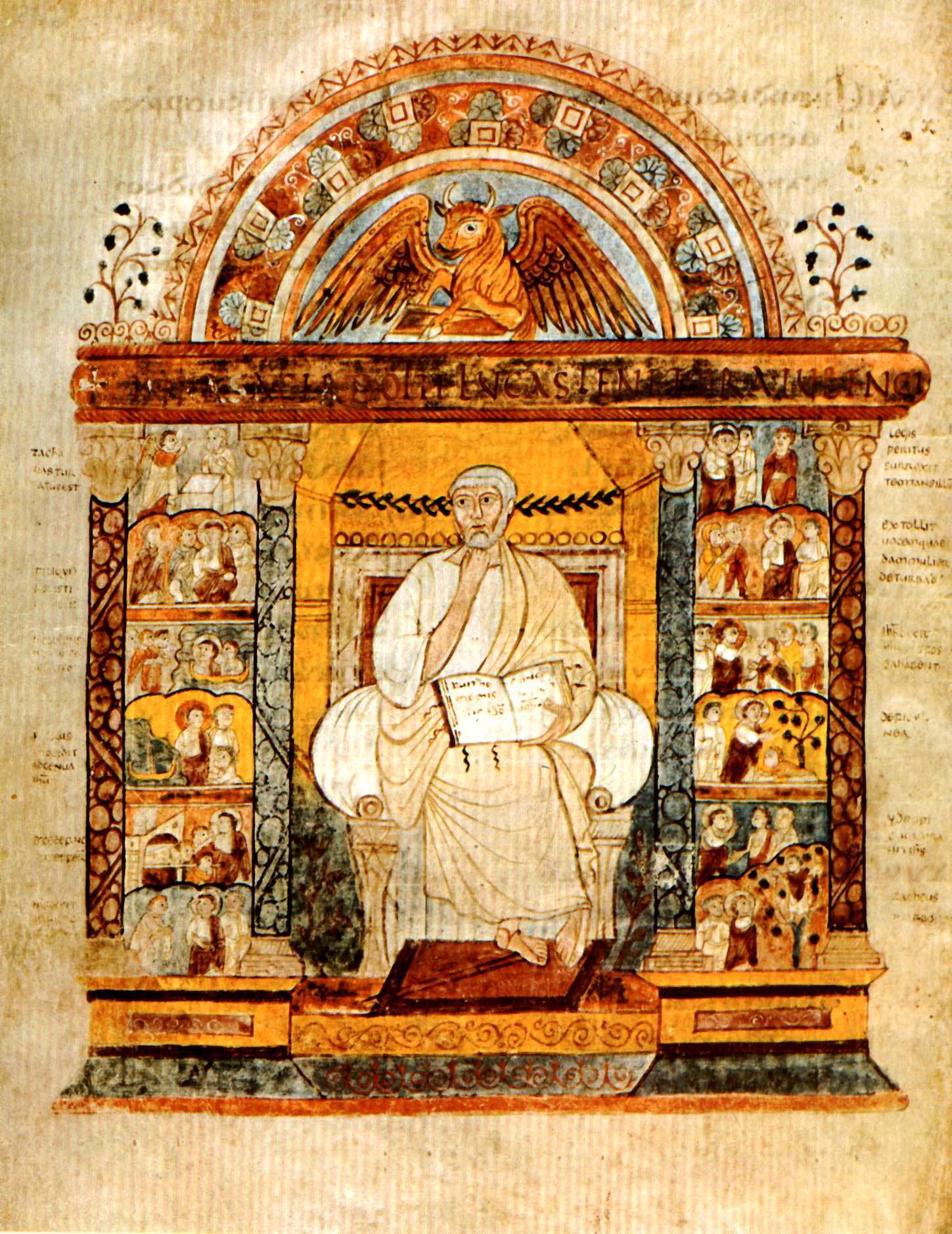Notes from the Other World
The Culture & Transcendence of Sacred Harp Singing
by Philip E. Devine
We gather in a seldom-used Union Chapel in Midcoast Maine. My wife and I are a bit late, and we hear the singing from a half a mile down the road—Sacred Harp (also called “shape note”) singings always begin promptly. After depositing our contribution to the potluck in the community center next door, we enter the chapel and take our places around a square, Celia as a treble, I as a bass. There are also tenors, also called the “leads,” and altos; the leads carry the melody.
In the center stands a woman—or sometimes a man—leading and keeping time. Then the chair announces, “Robert Smith next, followed by Jane Jones.” Robert moves to the center, while calling out “49 bottom,” and the singing continues. Each of us holds on our laps the Bible of the shape note movement, The Sacred Harp, 1991 revision . First, a designated person establishes a convenient pitch—which need not be close to the conventional reading of the notes—then we sing.
As David van Biema describes it in “Give Me That Old-Time Singing,” ( Time, January 17, 2008):
Nothing is weirder than Sacred Harp. Its favored subject matter—the pilgrim, the grave, Christ’s blood—is stark; its style—severe fourths and otherworldly open fifths—has been obsolete for more than a century. Its notation, in which triangles, circles and squares indicate pitch, looks like cuneiform. Yet it exudes power and integrity. Five people sound like a choir; a dozen like a hundred. It is one of the most democratic choral forms: no audience, no permanent conductor—just people addressing one another and God.
Sacred Harp music is sung a capella; the “sacred harp” is the human voice. The music gets its other name— shape note—from the fact that the notes are not all in the conventional shape. The shapes, developed as an aid to sight reading, correspond to a set of syllables somewhat different from the standard sequence do, re, mi. A triangle is fa, an oval is sol, a square is la, and a diamond is mi. Another name for shape note music, favored on websites, is Fasola. We sing these shapes first before launching on the words.
If we take a further look at 49 bottom, we discover that the title, “Mear,” is followed by a metric designation (C.M. = Common Meter). If you consult the “Rudiments of Music” at the beginning of the book, you find that this means “iambic, 8, 6, 8, 6,” where the numbers refer to the number of syllables in a line. It is common, though by no means universal, for the title of a shape note song to tell us nothing of its content; it often refers to the place where the song was composed.
Next, there is a verse of Scripture (in this case Romans 9:22), connected, tightly or loosely, to the theme of the song. Here the text speaks of God’s wrath and our endurance “with much long-suffering.” Next are the author and composer, with dates. The author of 49 bottom is (as is often the case) Isaac Watts (Charles Wesley is another favorite); the tune is anonymous. The dates of both words and music are eighteenth century, but there are texts as early as 1600 (“Long Sought Home,” 235 bottom) and tunes as late as 1989 (“A Thankful Heart,” 475).
Folk Music & Texts
Because the author of Sacred Harp texts is usually known, purists refuse to admit Sacred Harp to the canon of folk music. (Some people believe that Sir Walter Scott wrote the grim Scottish version of the Border Ballad “The Twa Corbies.” Would its ongoing status as a folk song depend on the outcome of this controversy?)
bulk subscriptions
Order Touchstone subscriptions in bulk and save $10 per sub! Each subscription includes 6 issues of Touchstone plus full online access to touchstonemag.com—including archives, videos, and pdf downloads of recent issues for only $29.95 each! Great for churches or study groups.
Transactions will be processed on a secure server.
more from the online archives
calling all readers
Please Donate
"There are magazines worth reading but few worth saving . . . Touchstone is just such a magazine."
—Alice von Hildebrand
"Here we do not concede one square millimeter of territory to falsehood, folly, contemporary sentimentality, or fashion. We speak the truth, and let God be our judge. . . . Touchstone is the one committedly Christian conservative journal."
—Anthony Esolen, Touchstone senior editor











